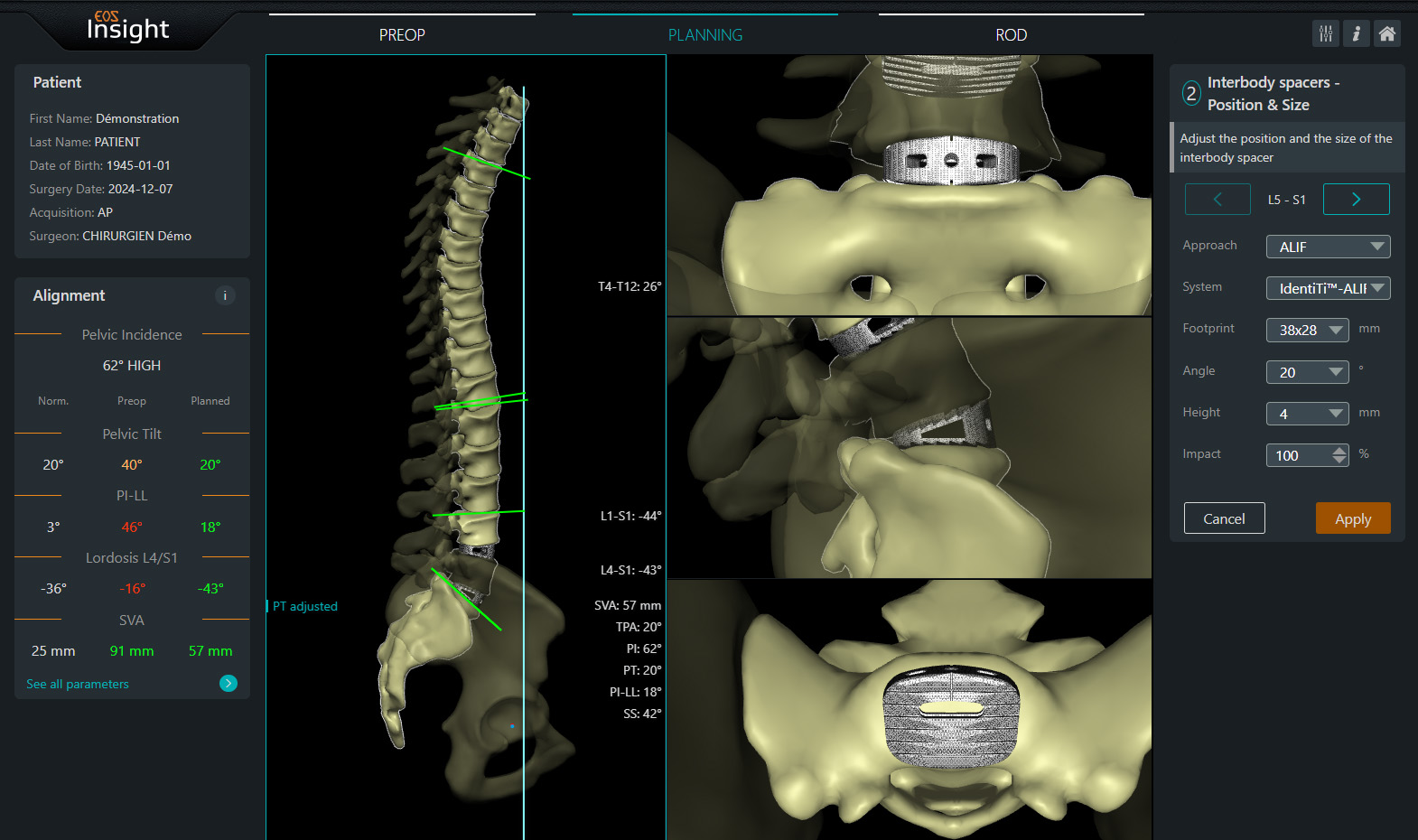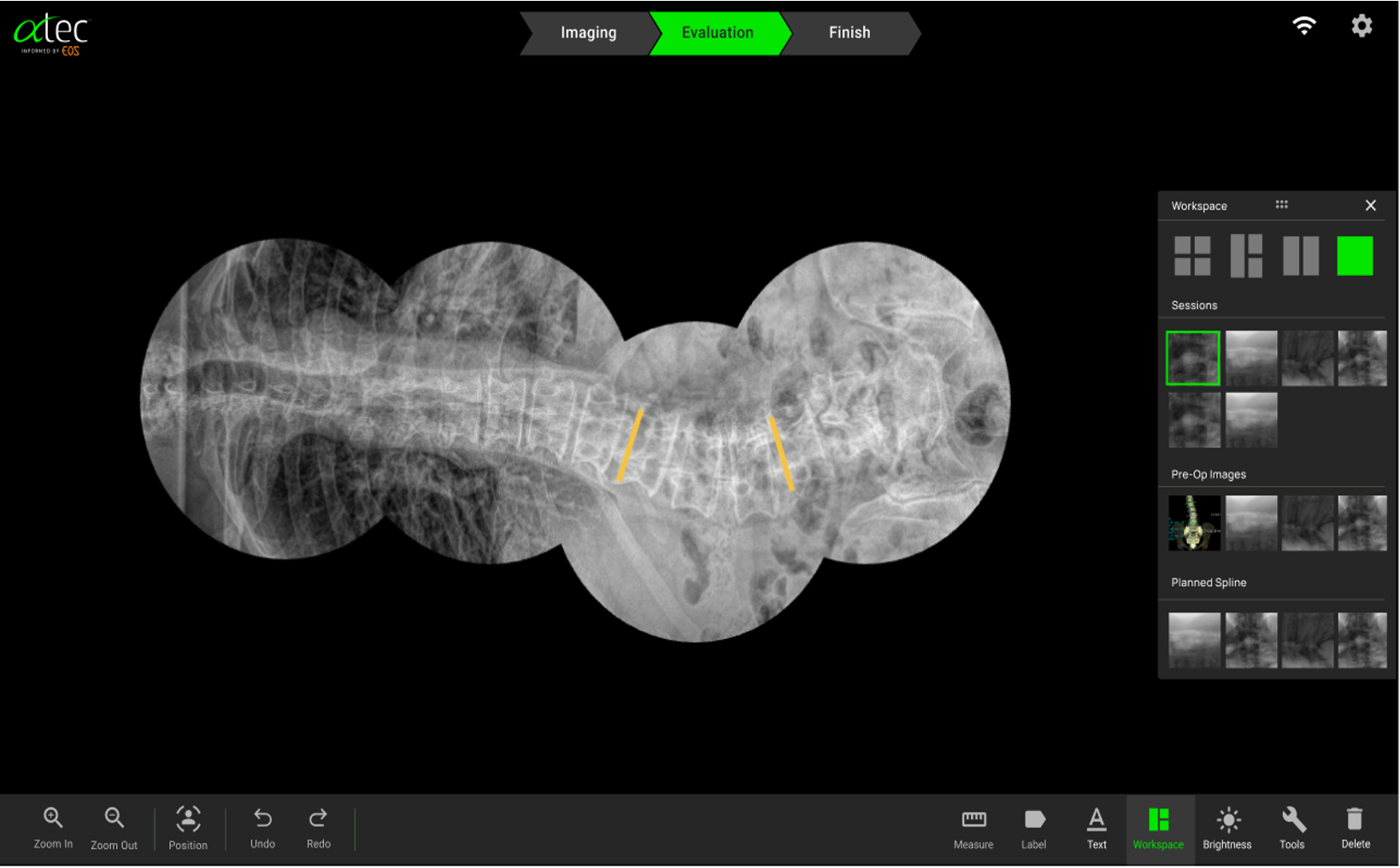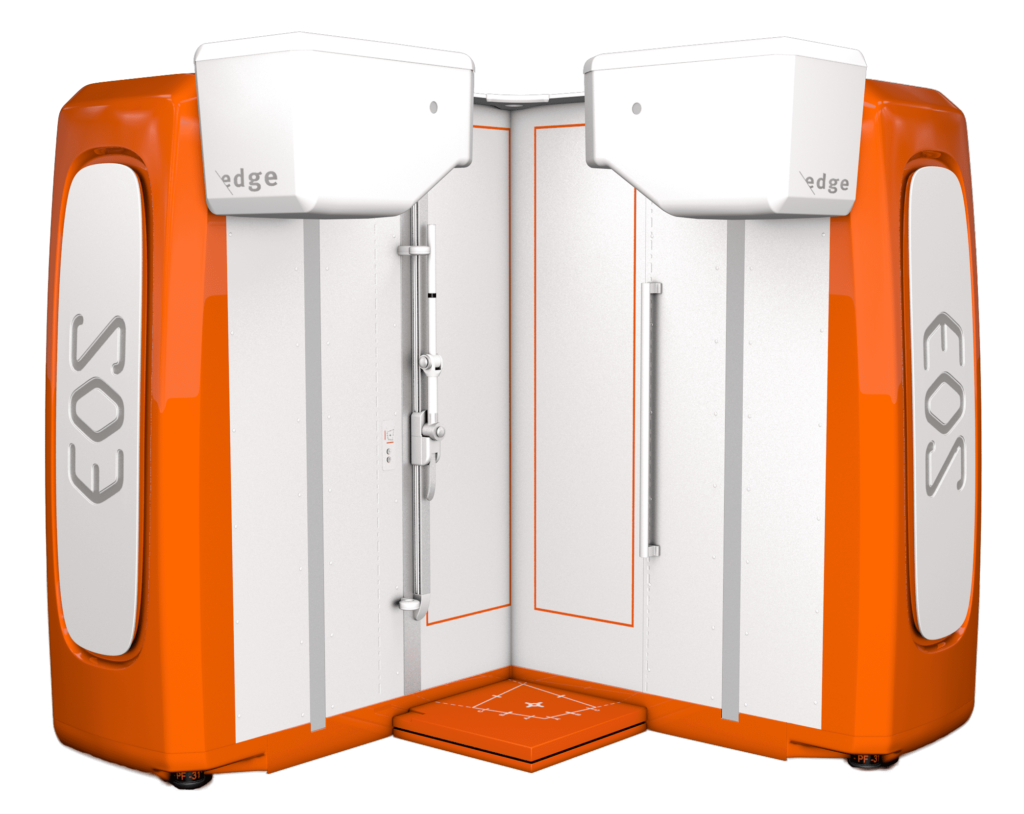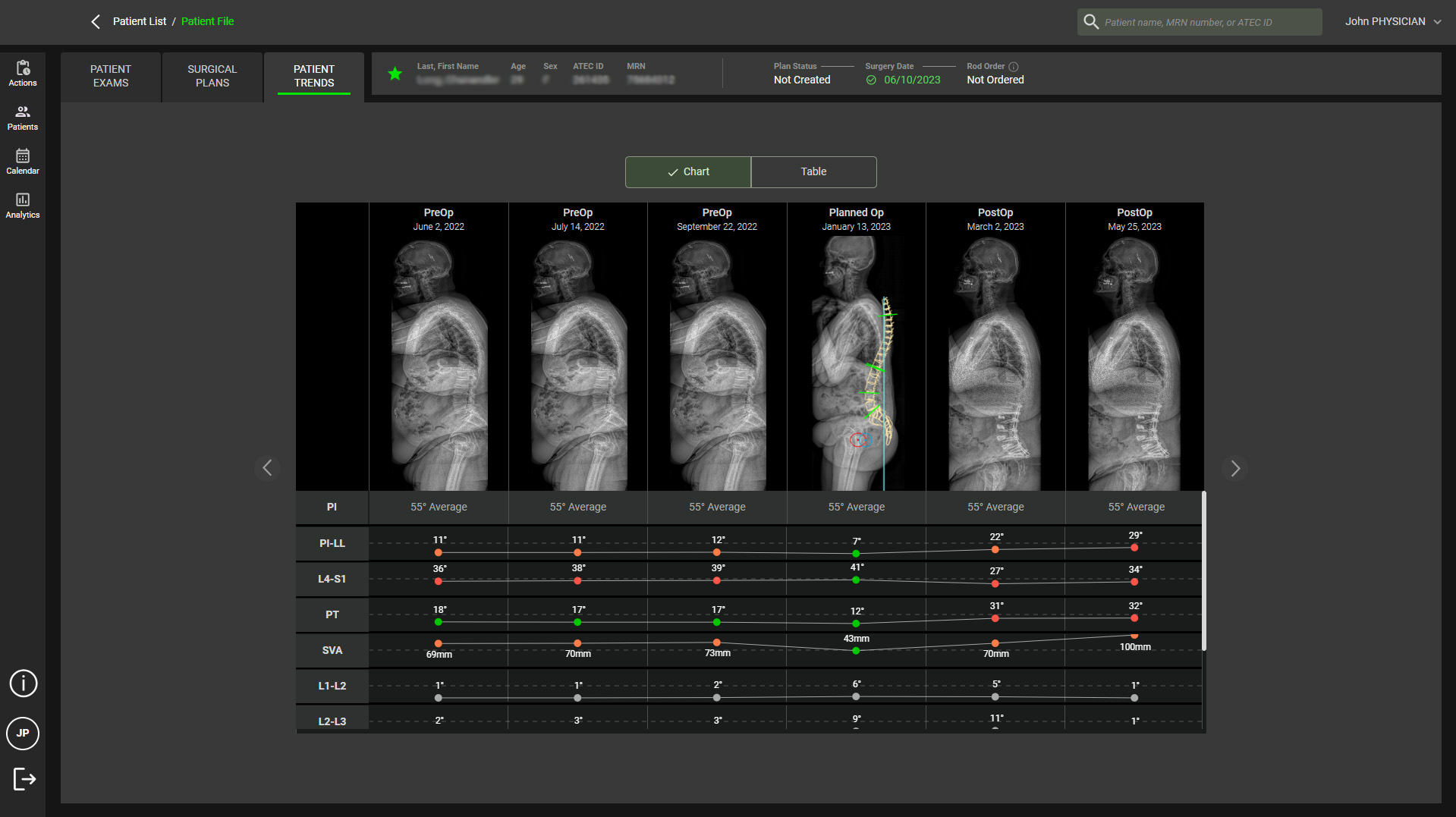
Built on the EOSedge™ foundation, EOS Insight™ is a data-informed, peri-operative platform that enables spino-pelvic alignment assessments, patient-specific surgical planning, patient trends, and surgeon analytics. The platform offers a synchronized and seamless experience - access data and the surgical workflow from your desktop or mobile device.

EOS Insight is truly the most comprehensive spine innovation I’ve witnessed in my 35-year clinical tenure.
- David G. Schwartz, MD
AI-driven alignment assessment
- The AI-based application that provides alignment measurements from the EOS scan.
- Modify alignment landmarks and tailor parameters to accommodate patient-specific anatomy.
- View alignment assessments and other EOS Insight information from anywhere using the mobile application.

3D surgical planning and simulation
- The web-based application that enables surgeons to create a surgical strategy based on the patient-specific measurements from EOS images.
- Create a surgical plan specific to each patient, addressing their alignment needs, based on measurements defined in AI-based Alignment.
- Simulate surgical correction using ATEC interbody spacers, osteotomies, spondy corrections, etc. Confirm implant sizing using the patient-specific model.

Intraoperative reconciliation
- The full-spine visualization system is designed to provide alignment insights.
- Import planned alignment values from EOS to be viewed intraoperatively.
- Perform distance and angle measurements on linked C-arm images intraoperatively.

Standardized Imaging
EOSedge™ simultaneously captures frontal and lateral full-body images in a functional standing position – enabling a comprehensive, global assessment of patient alignment.
Standardized images with best-in-class imaging technology.
- Full-body, weight-bearing images
- Simultaneous frontal and lateral acquisitions
- 1:1 calibration with no magnification or stitching
- High resolution with homogeneous image contrast
- Low Dose and Micro Dose protocols





